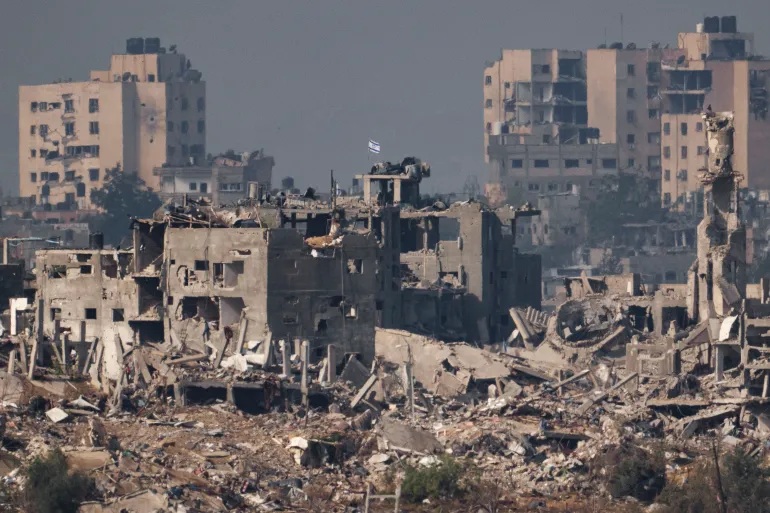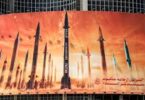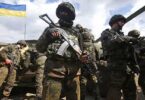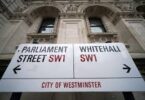Sultan Barakat
After a brief hiatus of seven days in late November, Israel has resumed its punishing campaign of indiscriminate bombing in Gaza. This time, the majority of the strikes are hitting the South of the besieged Strip, where about 1.8 million Palestinians are currently trapped, many of whom were forced to move from the North following Israeli evacuation orders.
As if from the depths of an Orwellian dystopia, Israel’s war cabinet, led by Prime Minister Benjamin Netanyahu, has created a map dividing Gaza into 620 separate plots, supposedly to be used by Palestinian civilians to avoid getting caught in “active war zones”. Netanyahu has also designated, with complete disregard for international law, a plot of land smaller than London’s Heathrow Airport as a “humanitarian area” and suggested Gaza’s entire population of 2.3 million should eventually go there.
What does this tell us about Netanyahu’s plans for the day after the war? The Egyptian authorities have publicly stated their fear that the aim of Netanyahu’s war is not to “eradicate Hamas” but to make Gaza uninhabitable so that the Palestinians living there are forced to abandon their homes and leave for good – a second Nakba in the making. However, I believe Netanyahu’s actual plan for post-war Gaza is different but equally sinister – he is gearing up to repeat a historical crime his country committed against the Palestinian people, but that crime is not necessarily the Nakba. After severing the link between Gaza and the West Bank, over the years Israel gradually divided the West Bank into smaller, disconnected plots. This made it much easier for Israel to continue stealing Palestinian territory with impunity. (In fact, since October 7, with the global community’s attention firmly fixated on Gaza, Israel has sped up the expansion of its illegal settlement project in the West Bank, and began to openly arm fanatic settlers.)
If Netanyahu has his way, what has happened to the West Bank will also happen to Gaza. Initially, the Strip will be split into three or more smaller entities with Israeli controlled “buffer zones” in between. Then the settlers will come in and start claiming more and more territory, leaving Palestinians divided and stuck in tiny, walled-in enclaves with no hope for the future. Of course, as he moves to mutilate Gaza in the same way Israel mutilated the West Bank over the past few decades, Netanyahu appears to be ignoring a crucial factor: the Palestinian will to survive and resist. This time, they will be fighting an existential fight, on the rubble of their destroyed homes and the graves of their killed kin, with nothing left to lose. They will not accept their fate quietly. An unprecedented humanitarian catastrophe is in the making. Israel’s collective punishment of the besieged population of Gaza has already killed more than 18,200 people, including at least 7,700 children. Israel’s apparent plans to carve Gaza into pieces will only bring on more suffering, and violence.
What should the international community do to put a stop to this disaster? One can only hope that the world will not remain a passive spectator to this unprecedented, unlawful and egregious attack on an oppressed population for much longer and will eventually be galvanised into action to stop this horrendous onslaught. The United States and its Western partners, who are allowing and aiding Netanyahu’s genocide in Gaza while disingenuously calling for a two-state solution, cannot be trusted to resolve this crisis and ensure the safety and dignity of the Palestinian people. Despite overwhelming support for the humanitarian ceasefire proposal at the UN Security Council – following the unprecedented invoking of Article 99 by Antonio Guterres – the US vetoed it. A few days later, the US found itself further isolated, voting, along with just nine other nations, against a similar UN General Assembly resolution. Accepting to focus on the mere provision of the most urgent humanitarian relief, such as food, water and medical aid, to Gaza while allowing Israel to continue with its devastating assault on the enclave will achieve little other than giving Netanyahu’s plans for Palestine another international seal of approval.
Furthermore, if Israel does not stop the bombs and the tanks, and agrees to lift the siege soon, no amount of humanitarian aid could save the Palestinians in Gaza. As Philippe Lazzarini, head of the UN’s agency for Palestinian refugees, has recently warned, if it is not stopped soon, Israel’s war on Gaza, combined with its relentless siege, will unleash a humanitarian “tsunami” of catastrophic proportions, with not only bombs and bullets but also a variety of communicable diseases killing starving and fatigued civilians in their thousands. Rather than entrusting the fate of Palestinians to Israel – and its Western benefactors – as has been the case since Oslo, the international community, led by the global majority, should take matters into its own hands and engineer a just solution involving important regional and global players. The only way to provide a sustainable solution to this deep-rooted conflict is to acknowledge that it does not involve two actors on equal footing, but is rather between an occupying force (Israel) and an occupied population (the Palestinian people, both in Gaza and the West Bank). Any solution constructed and supported by the international community should also address the grievances of the millions of Palestinian refugees whose families have been in limbo since their forcible eviction from their homeland during the Nakba.
A piecemeal and superficial approach, either ignoring the true nature of and the primary grievances underpinning this conflict, or attempting to address just one sub-section of it (for example, providing a road map for Gaza alone), would be akin to responding to a raging forest fire by extinguishing the flames on the tree closest to us and calling it a day. Any post-war arrangements should pave the way for the creation of an independent, sovereign Palestinian state. This means the proposed arrangement should allow Palestinians to live in peace and security with dignity, have opportunities to study and travel freely, and enjoy the same rights as the rest of the global community. The experience from Kosovo’s transition under the guidance of the UN in the aftermath of the 1998-99 Kosovo war could provide a tried and tested template. The Kosovo Liberation Army (KLA), which led Kosovar resistance against Serbia, despite being classified as a terrorist organisation by the US and others until 1998, was allowed after the end of the war to play a leading role in the political process that ultimately led to the creation of independent Kosovo.
Just like the KLA, Hamas is an armed resistance movement whose military ambitions exist only as far as the occupation exists and will cease the day Palestinians achieve their rights and can live with dignity and freedom. Finally, if the rules-based world order has any hopes of surviving in the aftermath of Israel’s Western-sanctioned genocide in Gaza, the perpetrators of this crime against humanity cannot be allowed to walk away scot-free. The cost of reconstruction must be borne by Israel.
It would be an injustice for those countries who have financed the reconstruction of Gaza following past wars to have to foot the bill once again. Furthermore, if the global community is serious about achieving sustainable peace in Palestine, and finally putting an end to decades of bloodshed, it should stop Israel from expanding its illegal settlement enterprise into Gaza, and start taking meaningful steps to ensure the creation of a sovereign Palestinian state – now.







